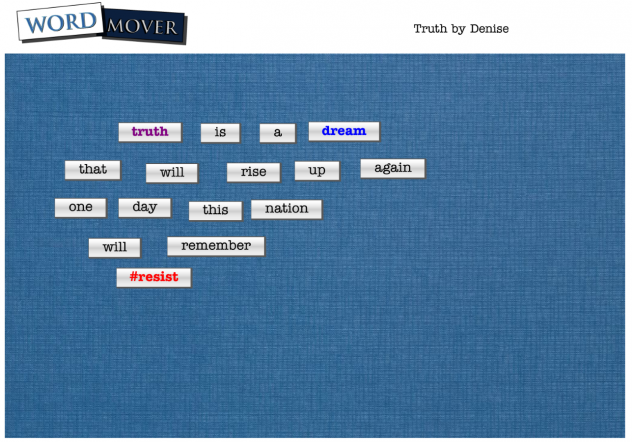I am open and questioning
I wonder why I’m so tired
I hear Inshallah and Shukran
I see the turquoise glittering buildings in Manama
I want to know the Truth
I am open and questioning
I pretend to know too much
I feel like screaming into my pillow
I touch my badge and shine it up
I worry that I can’t communicate with my students
I cry at night when I think too much
I am open and questioning
I understand that God is gracious to me anyway
I say God is love
I dream of a world of peace
I try to love
I hope for a bright future
I am open and questioning
I am Denise
I’m working on a variety of poetry formats with my class these days, so I’m making sample poems. The one I wrote today, I notice is a bit dark, but ‘I hope for a bright future,’ at least.
The “I Am” poem is an old form I used to use that was published by the ETTC (Educational Technology Training Center) of New Jersey. Does anyone know what happened to these great online poetry forms? Here is the BROKEN link that doesn’t work any longer. (And thanks to the tweeter at @RWTnow, here is a link to the archived list of the poems. They are even better than I remembered! However, beware–if you create a poem on one of the forms, it won’t be able to show it to you. You’ll have to screenshot it. Or just use the ideas for each poem.)
I typed up the “I Am” form for anyone to use. for their class. Click here for my Google Doc–just go to File > Make a Copy.

Found Poetry by Read, Write, Think, using the Word Mover Student Interactive.


Another poetry writing resource–writing a haiku on Read, Write, Think’s interactive Haiku form.
One last poem. Prepositional Phrase Poem
Beside my dying mom
During her last days
In her rock house living room
Next to the rented hospital bed
Because of my great love for her
With sadness in my heart
Without fear, but with God’s peace
Good-bye, Mama